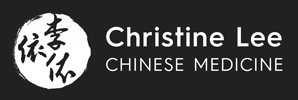ACUPUNCTURE
Acupuncture is a traditional Chinese therapy used to influence the functions of the body. The needles are sterilised and single-use. They are very small, about as fine as a human hair. Every care is taken to avoid discomfort, and generally patients find the experience of acupuncture quite relaxing.
Acupuncture needles has a written history of over 3000 years. It is based on eastern philosophy that recognises the flow of qi through channels in the body. Acupuncture needles are used to moderate and regulate each individual's flow of qi.
There is yet to be a complete understanding of “how acupuncture works” in a scientific context. However, research and clinical evidence is increasingly showing the efficacy of acupuncture in the treatment or management of a number of conditions. You can read more about mechanisms of action here.
A 2017 comparative literature review (MacDonald 2017) found consistent significant evidence for acupuncture in the treatment of conditions including: headache, migraine, hayfever, chronic lower back pain, nausea and vomiting, knee pain.
It also found moderate evidence for the use of acupuncture in the treatment of a larger number of conditions, including: acute lower back pain, anxiety, asthma, back and pelvic pain during pregnancy, cancer pain, cancer fatigue, constipation, depression (with meds), dry eyes, hypertension (with meds), insomnia, Irritable Bowel Syndrome, elbow pain, menopausal hot flushes, neck pain, obesity, menopausal insomnia, heel pain, shoulder pain, post-stroke pain, PTSD, restless leg syndrome, schizophrenia, sciatica, quitting smoking, stroke rehabilitation and jaw pain.
Importantly, the study also found cost effectiveness for using acupuncture to treat or manage the following: lower back pain, chronic pain, period pain, neck pain, hayfever, depression, headaches, migraine, osteoarthritis and post-operative nausea and vomiting.
What to expect in an acupuncture treatment
Expect your practitioner to take a detailed health history
Chinese medicine is holistic. Even if you are coming in for treatment on your knee pain, your practitioner will want to know the details about your sleep and bowel movements. This is to make an accurate diagnosis. It is important to understand where the problem began. But also as importantly, we try to understand why the body hasn’t healed the problem. All the details inform the diagnosis and treatment plan.
Expect your practitioner to explain the diagnosis and their expectations from treatment
Before consenting to treatment, you should feel confident about what your practitioner is hoping to achieve from treatment. They should be able to tell you what to expect and how long it may take to achieve results.
Acupuncture usually doesn’t hurt
It varies from person to person. Some people don’t feel a thing, while others will feel some slight discomfort. Care is taken to make the patient comfortable and feel safe. Most people find the experience relaxing and look forward to their sessions.
The practical details
A treatment usually involves about 6-12 needles (though it does vary)
The needles are sterilised, single-use and disposable. They are about the width of a human hair, about 10% the gauge of a medical syringe.
You may have treatment lying face up, or face down. Or both.
The points selected may be on the arms, legs, trunk or head, neck and face. They are not necessarily located where the problem is eg. headaches are often treated by needles in the hand and wrist.
When you are comfortable, the needles will be retained between 15-30 minutes.
Other techniques may be used - cupping, moxibustion, heat therapy, massage. Your practitioner will discuss these with you.
If herbal treatment could be helpful, your practitioner will talk to you about this too.
______
McDonald J, Janz S. The Acupuncture Evidence Project: A Comparative Literature Review (Revised edition). © Australian Acupuncture and Chinese Medicine Association Ltd, 2017

